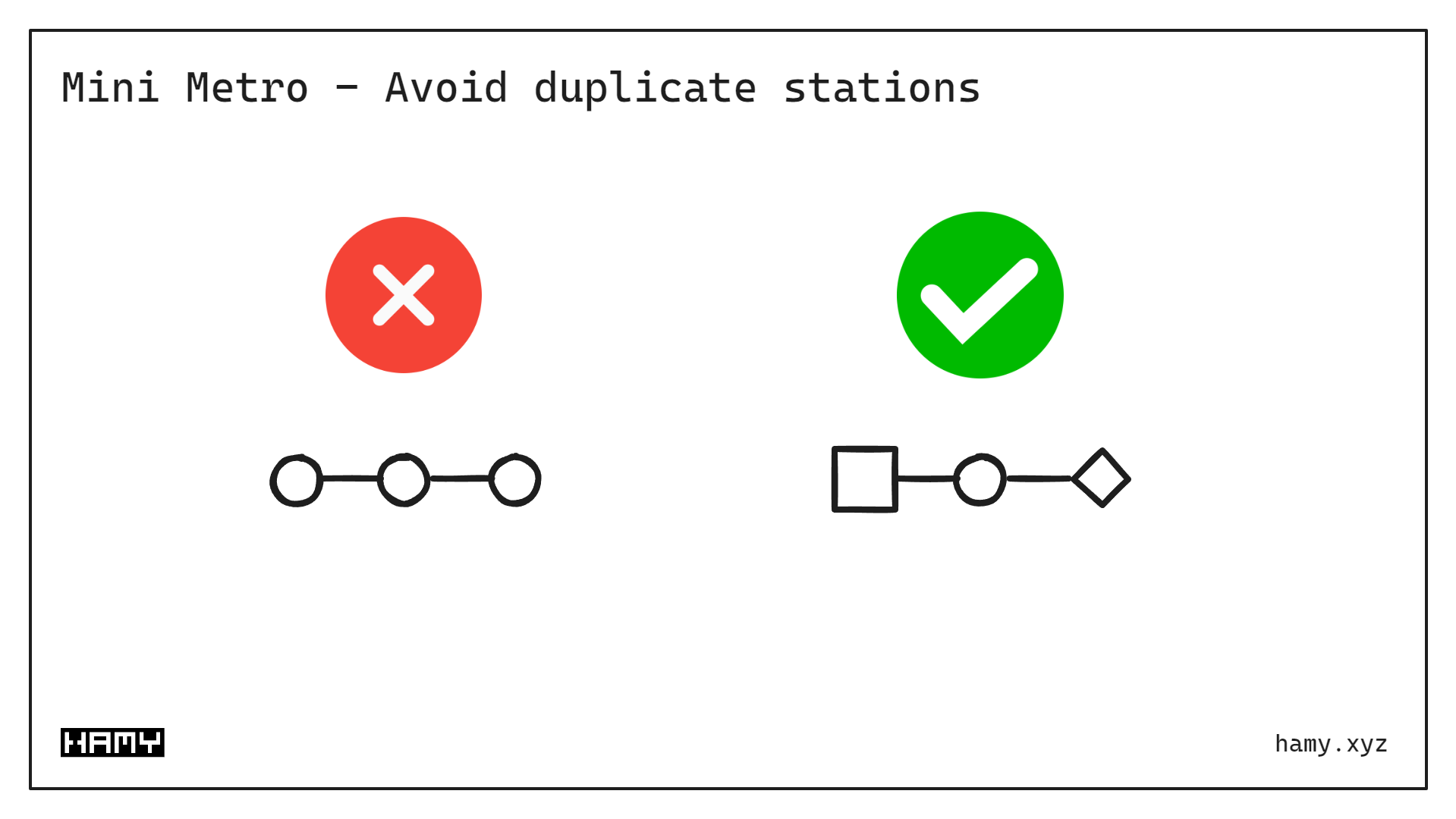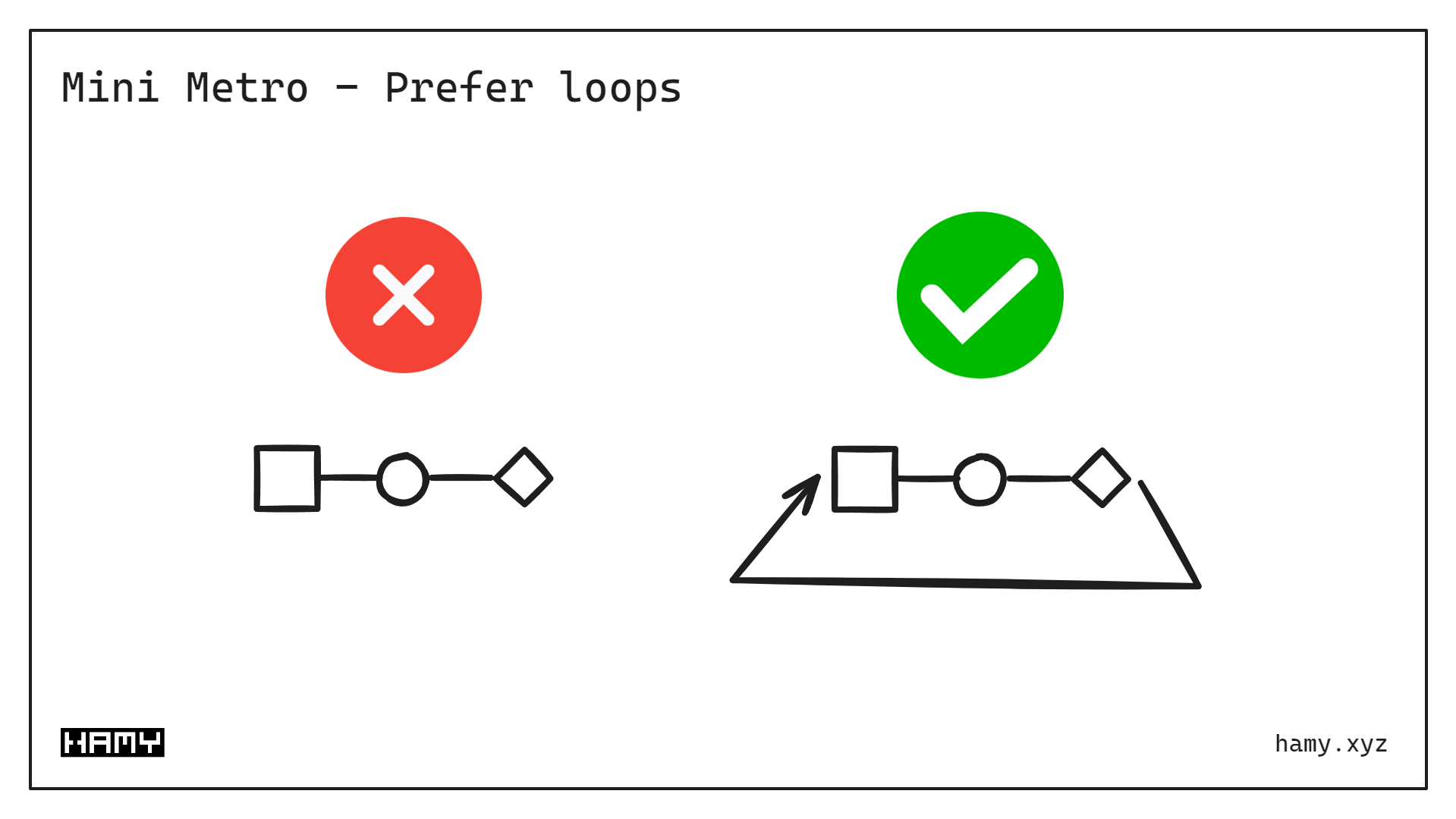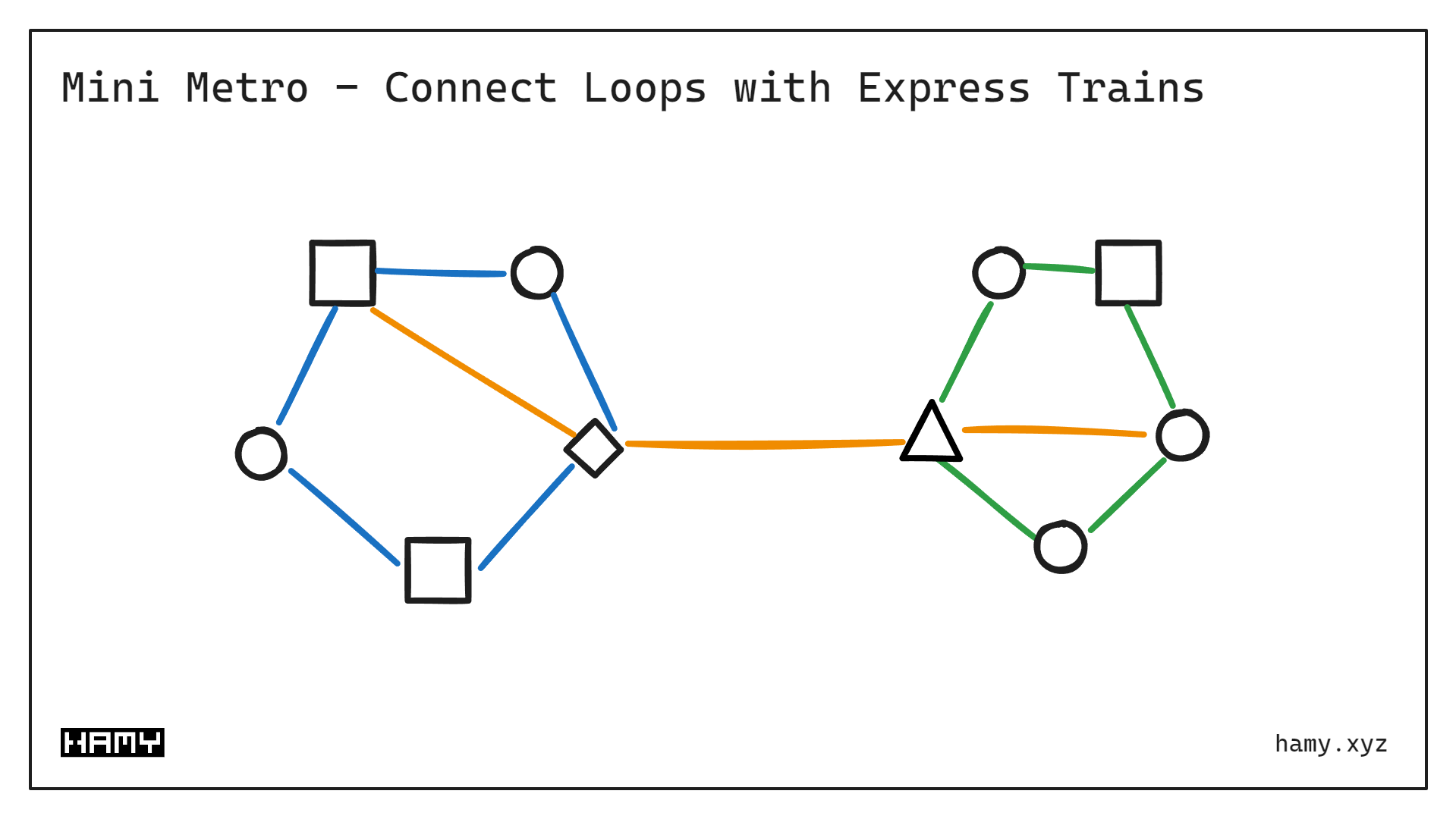Essay - Published: 2024.03.25 | create | games | mini-metro | tech | video-games |
DISCLOSURE: If you buy through affiliate links, I may earn a small commission. (disclosures)
Mini Metro is a fun little optimization game. The mechanics are simple - move passengers through your subway system - but quickly ramps up complexity until your subway system falls apart.
Over time I've developed Simple Scalable Systems that have consistently placed my subway systems in the top 10% of each map so in this post I'm going to share tips so you can, too.

The core optimization problem in Mini Metro is how to connect stations together such that you remove passengers from the system as fast as possible. The twist is that passengers can only leave the system on their target station shape.
We can model station shapes like:
We know that passengers will never spawn on a station shape that matches their target. So connecting the same station shape multiple times effectively means these passengers can never leave the system for this part of the route.
So in general we want to avoid linking the same station shapes multiple times in a row - even if that means making your train line a little longer or a bit convoluted.

Most beginners draw point-to-point lines. This makes sense as it's how most real-world lines work. This works okay but it's unlikely you'll hit the top 10% (or even top 50%) if you only use point-to-point lines.
The problem with point-to-point lines is that they don't distribute train arrivals evenly across their line. This leads to regular starvation on each side of the line which leads to backups which is how games end.
Loops often help with this problem by forcing a regular cadence of arrivals across all stations they service. This often allows them to service more stations more efficiently thus freeing up resources to use in the rest of your system
Another benefit of loops is that every station shape is in "front" of the train. The pickup algorithm uses this to determine if a passenger should be picked up so this helps ensure passengers regularly get moved from station to station.

Each map has its own probabilities for what station shapes will appear and each game is randomized so station shape and location will be slightly different. But what is true in every game is that some station shapes will be more common than others.
In general, the distribution of station shapes from most common to least common is:
More importantly - you should pay attention to the distribution of shapes in your game so you know what's most and least common.
The less common a station shape is, the harder it's going to be to get those passenger shapes out of the system. A good way to manage this is to connect multiple lines to the less common station shapes so that more lines are able to remove matching passengers with fewer transfers (thus faster).

Towards the end of every game there will simply be too many passengers for your normal loops to efficiently remove them from the system. A common way to fix this is to connect loops with a new line we'll call express trains.
Express trains typically:
Ghost Lines are an oft-overlooked gameplay mechanic that really sets most players apart from those climbing the leaderboard. It's so good that it feels like cheating so those who don't use it will almost always lose out to those who do.
A Ghost Line is a temporary line you put down to move passengers from A to B. The difference is that you immediately delete this line as soon as passengers at A are picked up.
This returns the line to your inventory but it also remains on the map to complete the trip to B. This is a Ghost line and enables quick, efficient movement from A to B allowing you to relieve pressure from backed up stations.
For games that end up in the top 10%, you'll be using Ghost Lines generously. In fact the latter half of the game will usually have most of your time devoted to Ghost Line management:
This makes games a lot longer but is remarkably effective at warding off game over conditions.
Every Sunday you get an upgrade. Choosing the right upgrades is crucial for giving you the resources to build a top system.
The upgrade you should pick is heavily dependent on the current state of your system and its current / near-future bottlenecks. But generally some upgrades are better than others.
Here's how I prioritize upgrade choices:
Hopefully these Mini Metro tips help you improve your own systems. Remember that every game is different so sometimes you'll just get some bad shapes / locations. That's okay - games are short so worth another try.
If you liked this video you might also like:
The best way to support my work is to like / comment / share for the algorithm and subscribe for future updates.